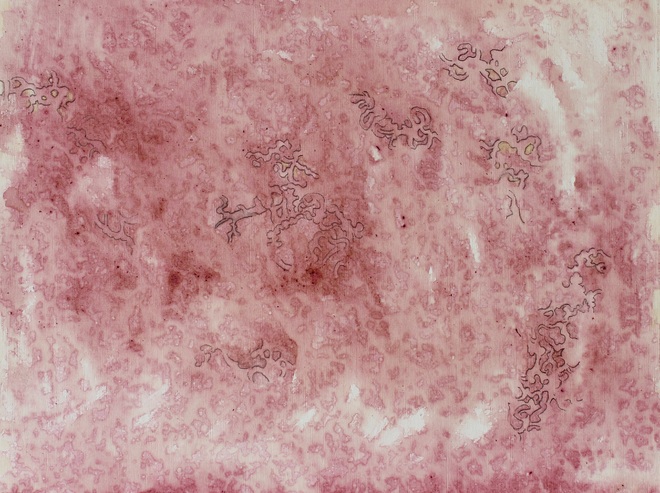
Prem Singh painted with fruits.
Amarjot Kaur
Ever wondered what they mean when they say, ‘It’s not about what you do, but how you do it!’ Well, if you were an artist, you would have imagined all possible connotations of the above-mentioned statement, and that too, with vivid details.
However, it is not very difficult to slip into an artist’s shoes, especially during the inception of an idea that will gradually translate into an exquisite masterpiece, but you must be willing to suffer a shoe bite or two. So, while the Chandigarh artists speak volumes about the experimental mediums that they work with to create what they imagine, there is more than just the visual extravagance that they focus on. After all, medium plays a very crucial role in communication of thought. So, if you thought painting is all about oil colours, oil pastels, pens, pencils, charcoal, acrylics and water colour, wait till these artists tell you about better alternatives!
Nuts about art
City-based artist, Siddharth, who has made use of rather interesting mediums shares that his artistic expression is only intensified with the use of this medium but they also help in restoring the quality of the artwork.
“I make use of vegetable and mineral pigments for my paintings. So, I take pigments from the bark of the trees, the leaves and flowers too,” he says. Siddharth also shares that he makes use of mineral colours, which he refers to as ocher colours. “One uses precious and semi precious minerals, including gold and silver or even soft stones found on the banks of the river. “Hartala Shodhana gives a brilliant yellow hue, which is difficult to make when working with either oil or acrylic and the quality of the colour is very different too,” he says. “Also, at times, I make use of roasted cashew nuts for brown colour or if I want a black charcoal-like colour, I roast them till they turn black and then paint with it, it gives a very interesting colour to the painting,” he adds. Siddharth says that these colours make his expression more organic and naturally subtle as opposed to chemical colours, which appear to be sharp and fake.
“While the chemical colours fade away with time, these natural pigments only get deeper, finer and better with time,” he says.
Experimental mode
Echoing similar concerns, city-based artist, Sanjay Kumar, who has been experimenting with organic colours and has also make a self-portrait series using these colours, shares that he has also been using metal liquids.
“I use liquid form of metals, without melting them, to make some of my paintings,” he says. Sanjay also makes use of mineral and organic pigments, especially saffron, indigo, kaja, alta, singras and even tea leaves in water! “The paint companies use thinner, which reduces the quality of colour. However, natural colours, because they are organic, don’t fade and they increase the life of a painting too.” Sanjay adds, “The indigo colour that one gets from the companies is so different from the indigo that grows in Harayana and Rajasthan and you can see the difference. It’s very real and has more infrared rays because of the harsh sun,” he says. Sanjay informs that to get yellow colour, he gets the cows to munch on some mango leaves, which give a deeper yellow tint to their urine and after it’s purified, he uses the colour directly on the canvas!
Fruity flavour
Meanwhile, Prem Singh, who now lives in Delhi and is an artist par excellence, recently let his imagination grind through a juicy fruity twist. So, when we ask him to explain his recent fascination, the artist shares, “Art is an expression that originates from experiences that stimulate you to create and when that happens you don’t necessarily go looking around for mediums. So, the first thing that catches your attention can possibly be the best option for your medium of choice and in my case they were fruits,” shares Prem Singh.
On his visit to England, while Prem Singh entertained himself with nature’s beauty in a park, a sudden impulse to paint right before it started to rain too over. “At that time I just had a sheet of paper and a couple of fruits in the park, so I started painting with strawberries, raspberries and beat root,” he shares. Prem Singh uses a UV coating on his paintings to increase their longevity and says that the use of organic mediums is not new to Indian art scene and that the miniature paintings used these colours in abundance. “They add a special dimension to the paintings,” he adds.
Oh My Gauche!
When Ravinder Sharma paints a series on Lord Shiva he explores a medium that adds a different dimension to the texture of his works. So, when we ask him what his key ingredient is, he says, ‘fevicol’! “The technique is called gauche. You may take any colour, poster, water or even acrylic and fabric paints can be handled with fevicol while using it as a base,” says Sharma.



























